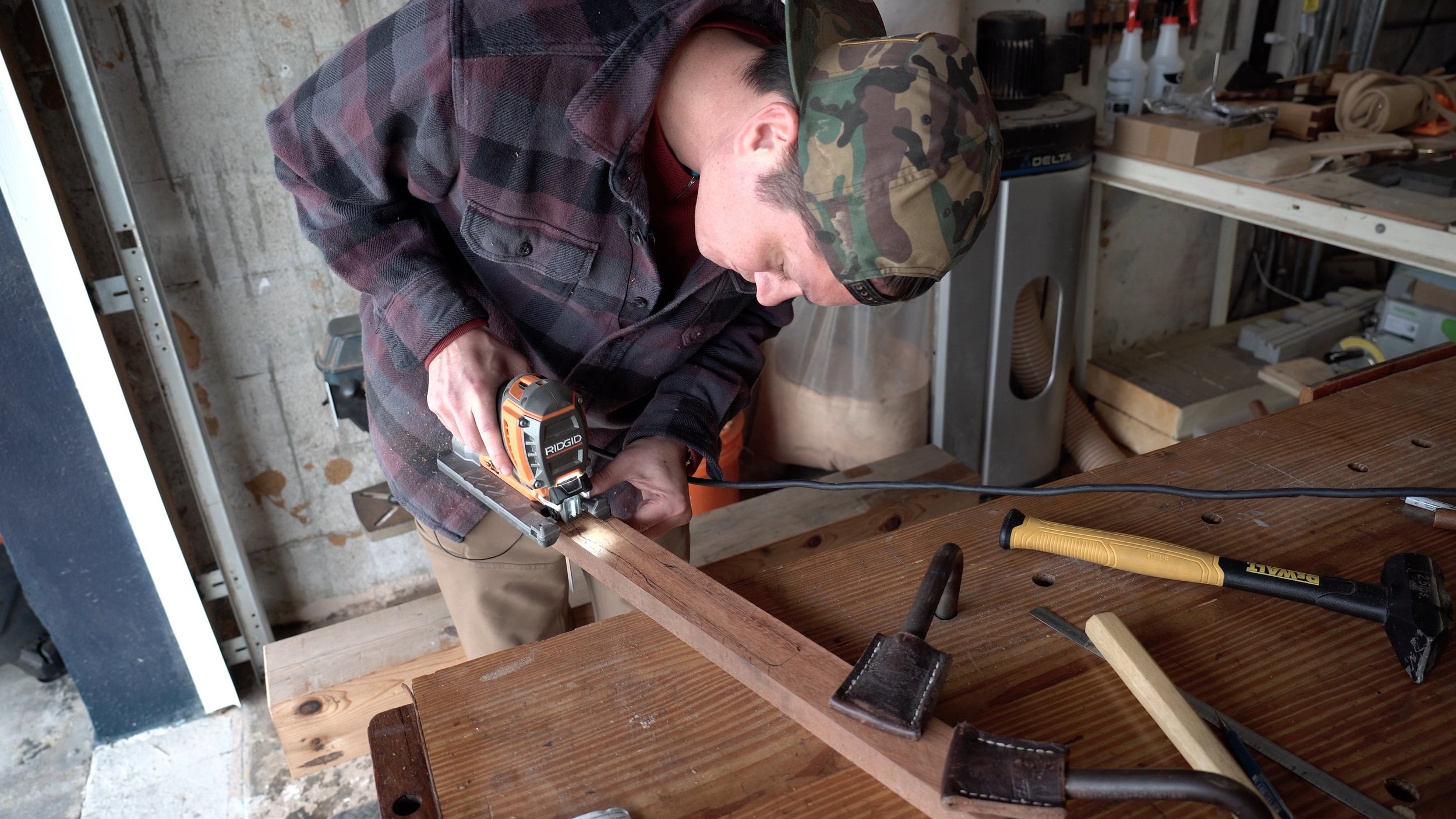For one, I cannot honestly believe it’s 2022. It seems like yesterday I began my woodworking journey and honestly, it keeps taking some pretty hard left turns and my dive into Japanese woodworking and its tools is absolutely no exception. I remember seeing Chris (yes another one) from Third Coast Craftsman handle a custom hammer head from Japan a couple of years back and I always wanted the opportunity to do so myself. I’ve got a couple of quality chisel knockers in my arsenal but this year, I wanted to really dive deep and do something that was in my opinion next level and meaningful.
Many of you may not be aware, but my Mother is from Singapore. I grew up in a house chock full of Asian influence, Japanese paintings, Indonesian carvings, and Eastern inspired lines. In fact, I remember going to my friends homes as a kid and noting at the differences in the furniture. Most of my friends lived in homes with stained white (or god forbid red) oak. A lot of folks had Ikea furniture and glass surfaced tables whereas we had a ton of marble and rosewood in our home. Our “coffee table” so to speak is a monster 8’ x 4’ “day bed” sans cushion. The apron and legs are intricately carved and my Father who passed away in 2018 used to say that the legs were broken off by customs on its way to the states because they had suspected smuggling. Whether that is true or false, I will never know.
Using the DIABLO Bi-Metal Jig Saw Blades with Bi-Directional Tooth Design
In making this handle, I had to bulk out a majority of the shape with a pretty standard jig saw. I gave up my bench top bandsaw shortly after starting the YouTube channel. It’s a decision I don’t really regret but at the same time, having something like that would be extremely valuable for a project such as this. So when DIABLO sent me out these Bi-Metal Jig Saw Blades with Bi-Directional Tooth Design, I was immediately intrigued.
For starters, the bi-directional tooth design is something I’ve never really encountered before on a jig saw blade and I was pleasantly surprised by the functionality. These blades are 4 5/8” long, fairly long for a standard jig saw blade and operating at 13 TPI (teeth per inch). At that TPI, the cut is pretty fine to begin with, but the bi-directional tooth design is really where things kick off. The center of the blade has an almost neutral tooth pattern where the top part of the blade has a downward cut and the bottom part of the blade has an upward cut. The result being an extremely clean result on both top and bottom.
Bi-Metal Jig Saw Blade in Action
Now the only thing I didn’t anticipate was that this was not exactly ideal for thinner stock. Where this would really come in handy is on wood that is substantially thicker than this hammer handle. If you’re operating purely on the base plate, you’d end up with really only the cleanest surface on top and a moderately clean surface on the bottom as opposed to the ultra fine finish that this design affords. There’s a couple of quick solves here that would make this more practical.
For one, utilizing a riser on the base plate of your jig saw, such as a 3/4” piece of plywood mounted to the bottom, would lift the section of blade to the more appropriate height. The idea being that you want the middle section of teeth to be aligned to the middle of your board to allow for that clean cutting area on both top and bottom.
The other option is what I used on the handle, which is to eventually lift the base plate off the work piece and sort of free hand it. Since I was going to do a fair bit of refining with hand tools, this was a really practical and easy option and it cut smoothly and quickly doing so. An absolute win.
If you’re interested in this product, check out the link here: https://homedepot.sjv.io/JrjGEE and don’t forget to watch the YouTube Video on how I crafted this handle from a piece of scrap jatoba.



